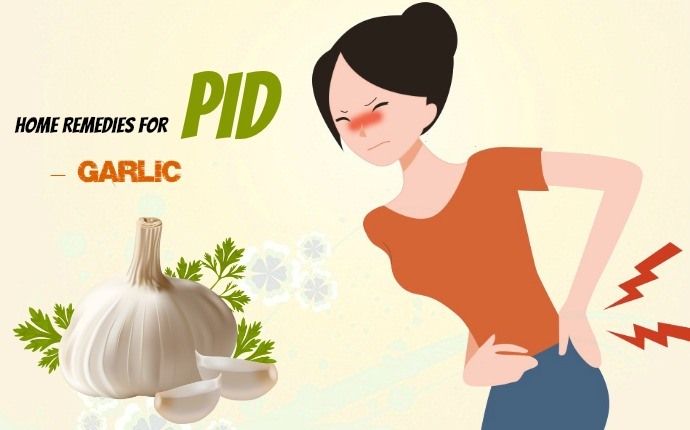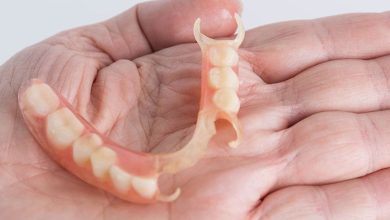7 HOME REMEDIES FOR PELVIC INFLAMMATORY DISEASE


Pelvic inflammatory disease, or PID, is an infection of the organs of a women’s reproductive system. They include the uterus, ovaries, fallopian tubes, and cervix. It’s usually caused by a sexually transmitted infection (STI), like chlamydia or gonorrhea, and is treated with antibiotics.
It can affect the uterus, or womb, the fallopian tubes, the ovaries, or a combination.
Complications include chronic, persistent, pelvic pain, ectopic pregnancy, and infertility. According to the Centers for Disease Control and Prevention (CDC), 1 in 8 women who have had pelvic inflammatory disease (PID) have difficulty becoming pregnant.
Most cases result from an untreated infection in the vagina or cervix that spreads.
Sexually transmitted infections (STIs) are a common cause, but it can develop from infections due to other causes.
You might not notice any symptoms of PID early on. But as the infection gets worse, you can have:
- Pain in your lower belly and pelvis
- Heavy discharge from your vagina with an unpleasant odor
- Bleeding between periods
- Pain during sex
- Fever and chills
- Pain when you pee or a hard time going
Table of Contents
Risk factors
Apart from an STI, some risk factors increase the risk of developing PID.
Childbirth, abortion or miscarriage, if bacteria enter the vagina. The infection can spread more easily if the cervix is not fully closed.
An intrauterine device (IUD), a form of birth control that is placed into the uterus. This can increase the risk of infection, which may become PID.
An endometrial biopsy, during which a sample of tissue is taken for analysis, increases the risk of infection and subsequent PID.
Appendicitis very slightly increases the risk, if the infection spreads from the appendix to the pelvis.
REMEDIES
1. Turmeric
Turmeric contains an active ingredient called curcumin with powerful antibacterial as well as anti-inflammatory properties that can help fight the infection as well as relieve symptoms. In addition, turmeric is good for your immune system.
- Boil 1 teaspoon of turmeric powder in a glass of milk. Drink it once daily until the symptoms subside.
- Take turmeric supplements, 500 mg 3 times per day. However, consult your doctor before taking a supplement.
2. Pelvic Massage
Pelvic and lower abdominal massage helps tighten the muscles and increase blood flow to the reproductive organs. This in turn eases the pain, provides relaxation and speeds up healing.
-
- Mix a few drops of lavender essential oil in a carrier oil like olive oil.
- Lie on the bed and stretch out your body.
- Apply this oil on your lower abdomen.
- Gently massage the pelvic area and lower abdomen in circular motions for 5 to 10 minutes.
- Massage 1 or 2 times daily until the symptoms subside.
3. Tea Tree Oil
You can also use tea tree oil to treat PID, as it has strong antimicrobial properties. It helps fight the infection-causing bacteria and even reduces vaginal odor, one of the common symptoms of PID.
- Mix 2 or 3 drops of tea tree oil in a small bowl filled with warm water.
- Use it to rinse your vagina.
- Follow this remedy once daily for a month.
Note: Do not take this essential oil orally.
4. Garlic
Garlic is very effective for treating PID due to its strong antibacterial and antibiotic properties. Several compounds in garlic help destroy the harmful bacteria. It also helps regulate the good vaginal bacteria and prevent a recurrence of the infection.
- Fry 2 or 3 minced garlic cloves in 2 tablespoons of olive oil until the garlic turns brown. Strain the oil and allow it to cool. Soak a clean cotton ball in this oil and insert it in the vagina. Remove the cotton ball and leave the oil in the vagina for a couple of hours before rinsing it off. Do this daily until the infection clears.
- Also, increase your garlic intake by adding it to your meals or taking a garlic supplement after consulting a doctor.
5. Baking Soda
Baking soda is another effective treatment for PID. This alkaline compound helps reduce acidity and alkalize the colon and other organs. This in turn helps eliminate infection-causing bacteria. In addition, it helps balance the body’s pH level.
-
- Add ½ teaspoon of baking soda to a glass of water.
- Stir in 1 teaspoon of psyllium fiber.
- Drink it on an empty stomach once daily for a few weeks.
6. Sitz Bath
A contrast sitz bath is an effective remedy to reduce the symptoms of PID. While the hot bath will help relax the pelvic muscles, the cold bath will help alleviate pain.
- Fill two large bathtubs– one with warm water and the other with cold water.
- Add a few drops of lavender essential oil to each and stir well.
- First, sit in the tub with hot water up to your waist for 3 minutes.
- Next, sit in the tub of cold water up to your waist for 1 minute.
- Repeat a few times and end the session with cold water.
- Enjoy a sitz bath a few times each week.
7. Castor Oil
Castor oil is an effective remedy to ease the pain caused by PID. It contains ricinoleic acid, which has analgesic and anti-inflammatory properties that help reduce pain.
- Fold a large, flannel cloth into layers.
- Pour 2 to 3 tablespoons of castor oil on it.
- Warm the cloth to a comfortable temperature in a microwave.
- Lie down on an old towel and put the warm flannel cloth on your lower abdomen.
- Cover the cloth with a plastic wrap and wait 20 minutes.
- Repeat this remedy once or twice daily for a week.
You can even use castor oil to massage the pelvic region to ease pain.
For any important information please contact us Email GadgetsNg info@gadgetsng.com
[Button id="1"]




Muchas gracias. ?Como puedo iniciar sesion?
Hi, I do think this is a great site. I stumbledupon it ;
) I am going to return once again since i have book-marked it.
Money and freedom is the best way to change, may you be
rich and continue to guide other people.
Also visit my site vpn code 2024
I’m amazed, I must say. Rarely do I come across a blog that’s equally educative and entertaining, and without a doubt, you’ve hit the
nail on the head. The issue is an issue that too few folks are speaking intelligently
about. I’m very happy I came across this during my hunt for something relating to
this.
Feel free to visit my website :: vpn 2024
india pharmacy http://indiaph24.store/# india pharmacy
indian pharmacy